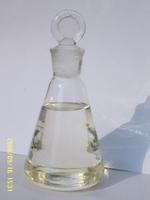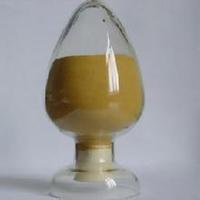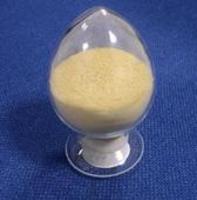English name: butyric acid
Chinese alias: n-butyric acid, a natural acid, butyric acid
English Name: n-butyric acid; natural butyric acid; butanoic acid; alpha-butanoic acid
CAS No.: 107-92-6
EINECS: 203-532-3
InChI: 1 / C4H8O2 / c1-2-3-4 (5) 6 / h2-3H2,1H3, (H, 5,6) [1]
Molecular formula: C4H8O2
Molecular Weight: 88.11
Melting point (℃): - 7.9
Boiling point (℃): 163.5
Relative density (water = 1): 0.96
Vapor Density (Air = 1): 3.04
Saturated vapor pressure (kPa): 0.10 (25 ℃)
Heat of combustion (kJ / mol): 2181.4
The critical temperature (℃): 355
Critical pressure (MPa): 5.27
Flash point (℃): 71.7
Ignition temperature (℃): 452
The upper limit of explosion% (V / V): 10.0
Lower explosive limit% (V / V): 2.0
Appearance: colorless oily liquid with a pungent and unpleasant odor.
Solubility: miscible with water, soluble in alcohol, ether.
The main purposes: as extraction agent, decalcification, synthetic esters, also for the Preparation of spices, fungicides and emulsifiers.
Health hazards:
high concentrations of first contact, can cause skin, eye or mucous membrane irritation moderate damage.
Environmental hazards:
hazard to the environment, can cause pollution of water bodies.
Explosion risk:
It can burn, corrosive, irritant, can cause the body burns.
Preparation and Production:
Industrial production methods have agricultural fermentation, oxidation of n-butanol and n-butyraldehyde fermentation.
Agricultural fermentation using sucrose or starch fermentation, depending on the product too low, a large amount of post-processing has been replaced by synthetic methods. Starting from the
oxidation of n-butanol, wherein the intermediate product is n-butyraldehyde, with the widespread use of propylene-Oxo process of industrialization, this method has not been adopted. Direct use of
n-butyraldehyde butyric acid oxidation process route has a simple, easy production control, a single, high product yield varieties of raw materials and so on. The lab also were prepared by
concentrated nitric acid oxidation method, namely n-amyl alcohol as raw materials, with concentrated nitric acid oxidation.
The world's annual production of n-butyric acid was about three tons, mainly concentrated in a few large companies in Central Europe and the United States; domestic butyric acid users are
mainly distributed in the Yangtze River Delta, Pearl River Delta and Tianjin and other places, there have been more than a dozen domestic production manufacturers butyric acid, but the scale is
very small, poor quality, only about 98% purity, unable to compete with foreign products. Simply can not meet the demand for pharmaceuticals and other industries butyric acid. Before 2000, the
domestic high-purity n-butyric acid essential to rely on imports.












